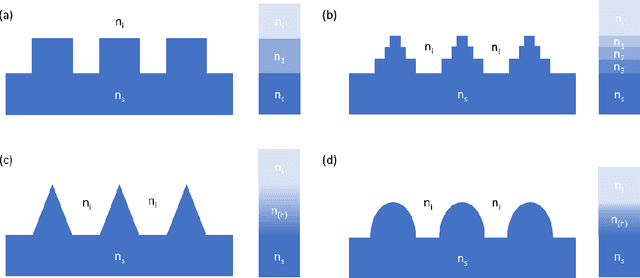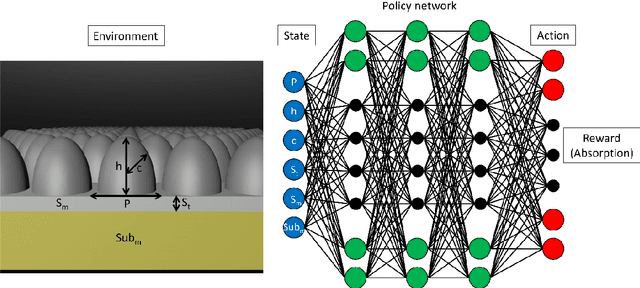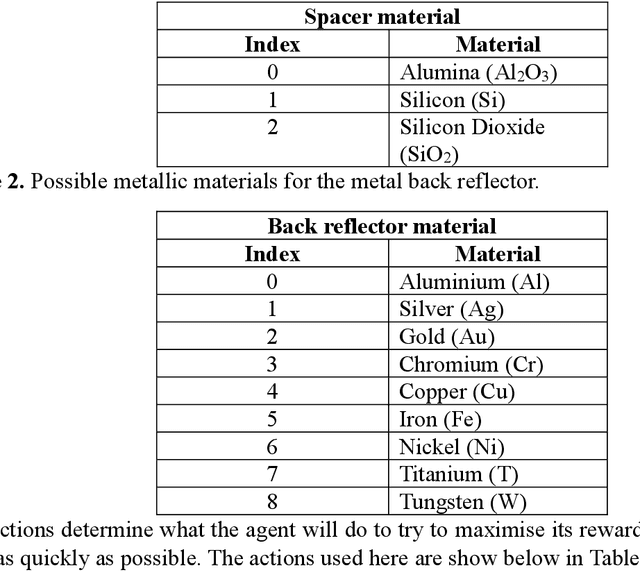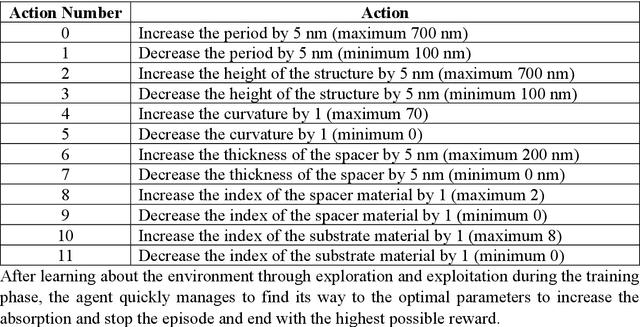Trevon Badloe
Biomimetic Ultra-Broadband Perfect Absorbers Optimised with Reinforcement Learning
Oct 28, 2019



Abstract:By learning the optimal policy with a double deep Q-learning network, we design ultra-broadband, biomimetic, perfect absorbers with various materials, based the structure of a moths eye. All absorbers achieve over 90% average absorption from 400 to 1,600 nm. By training a DDQN with motheye structures made up of chromium, we transfer the learned knowledge to other, similar materials to quickly and efficiently find the optimal parameters from the around 1 billion possible options. The knowledge learned from previous optimisations helps the network to find the best solution for a new material in fewer steps, dramatically increasing the efficiency of finding designs with ultra-broadband absorption.
Finding the best design parameters for optical nanostructures using reinforcement learning
Oct 18, 2018



Abstract:Recently, a novel machine learning model has emerged in the field of reinforcement learning known as deep Q-learning. This model is capable of finding the best possible solution in systems consisting of millions of choices, without ever experiencing it before, and has been used to beat the best human minds at complex games such as, Go and chess, which both have a huge number of possible decisions and outcomes for each move. With a human-level intelligence, it has been solved the problems that no other machine learning model could do before. Here, we show the steps needed for implementing this model on an optical problem. We investigated the colour generation by dielectric nanostructures and show that this model can find geometrical properties that can generate a much deeper red, green and blue colours compared to the ones found by human researchers. This technique can easily be extended to predict and find the best design parameters for other optical structures.
 Add to Chrome
Add to Chrome Add to Firefox
Add to Firefox Add to Edge
Add to Edge